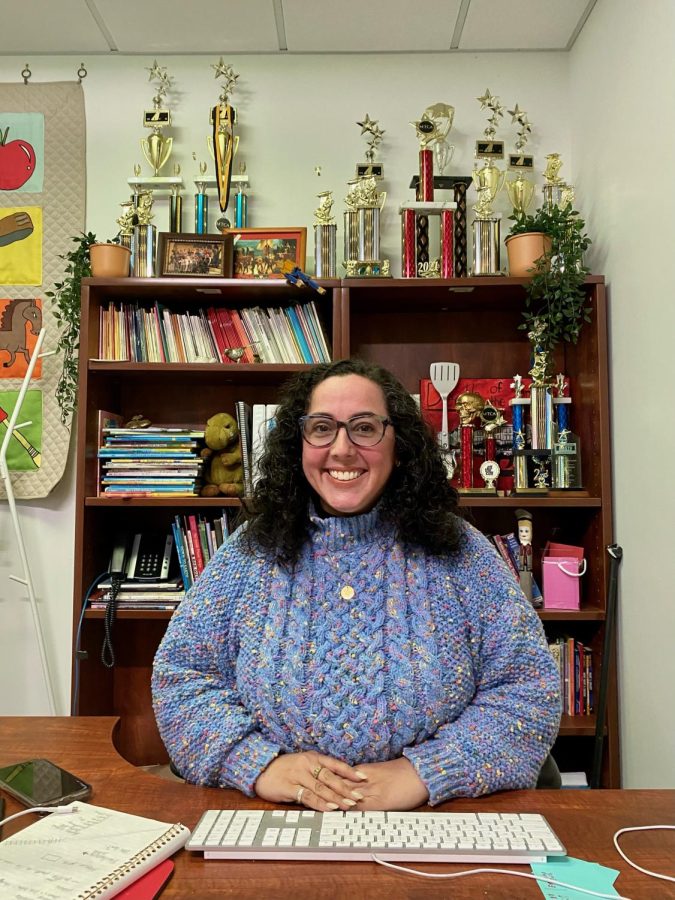Penelope Caywood on Bringing the Transformative Power of Drama to the Classroom
Penelope Caywood (Photo by Langley Hayman | The Daily Utah Chronicle)
April 2, 2022
It’s hard to find someone who knows as much about youth theatre-arts programs as Penelope Caywood. Caywood is a teacher, actor, choreographer and the artistic director of University of Utah Youth Theatre — a non-profit and year-round performing arts training program for youth ages 5 to 18.
As an arts educator, Caywood watches young students grow in the craft of drama while also practicing problem-solving skills that apply both on and off stage. I sat down with Caywood to talk about how drama can be used as a tool for learning in the classroom, and why it’s so important that arts education programs stay in schools.
Drama in the Classroom
Caywood gave me the run down on how drama can be used as a teaching method in the classroom. “When you do a play, you’re always working with other people; it’s collaborative in nature,” she said. Similar to plays, classrooms are collaborative spaces where students and teachers join together, discussing different subjects and going through sets of problems. “The drama has to be about something. There has to be a problem that you have to resolve — it follows a narrative structure. Everything’s a story; everything we’re learning is a story,” she said.
In this, the structure of a play mirrors the structure of a classroom, giving drama a unique role as a pedagogical tool. “When you can step inside of a story, or a historical moment, or a math word problem, or the water cycle, you see it from a different perspective and you’re almost embodying it, so you don’t forget it,” Caywood said.
Caywood’s approach to drama as a teaching method is non-traditional because it isn’t entirely standardized and doesn’t follow the traditional classroom model. Students don’t merely sit at desks and share their thoughts via the binary question-response method. Drama requires both the use of the voice and the body, as well as the imagination of the mind as it responds to each moment.
A Natural Learning Process
Drama is a compelling tool for classrooms because of how intuitive and deep-seated it is as a learning process. Caywood spoke about observations she made once she began studying theatre and education simultaneously. “What I came to learn is that [drama] is natural,” she said. “You see kids on the playground when they’re three to five; they’re acting things out that they’ve seen. They’re playing grown-ups and playing with dolls just like they might have seen their parents or grown-ups do. They’re telling each other what to say and they’re directing each other. This is a natural process that we inhabit as humans.”
Drama appeals to students’ natural curiosity, making it easier for them to stay engaged in their learning. “As humans, we love to tell a story, so why can’t the story be about the things that matter to us, or the things that we want kids to learn?” she said. If we want to invest in the education of our youth, we should explore and invest in all the ways of learning we can open up for them.
Skills for Life
“There’s so much that’s happening inside the brain of anyone who’s doing theatre,” Caywood said. “They’re problem-solving in the moment.” When someone forgets their line or leaves a prop on stage, students have to work through the problem. Working through problems is a collaborative experience as well — teamwork is required to pass a prop off stage without saying a word. “For a bunch of second graders, that’s huge.”
Not only does drama engage critical thinking skills, it builds confidence and allows kids to lead a fulfilling life — a life where they trust their own voice. “To be able to share your voice in front of other people is huge,” Caywood said. Drama carves out a space for students to feel like what they have to say is important — “without your part, the whole thing isn’t complete.”
A Promising Future
How can we address access to theatre-arts programs in order to ensure that more students have the arts in their education? Caywood recognizes the limitations of her reach as a single person. “I can’t be at every school,” she said. “I’ve been to many, but there aren’t enough people doing this kind of work. The way that I try to address access is by doing professional development with classroom teachers from all across the state.” By sharing their skills with others, arts educators not only pass pedagogy to more students and teachers, they also allow each community of students and teachers to tailor the pedagogy in a way that best suits their needs.
When Caywood watches her students and thinks about the future, she isn’t worried. “I feel like the kids that are in my program leave differently — they leave feeling like their opinions matter.” Caywood’s students leave equipped to enter the world, taking creative leadership and ownership, with the confidence to assert and apply themselves. She jokingly told me, “I either have created monsters or have created, hopefully, the leaders of tomorrow.” If you ask me, it’s the latter.
To learn more about how to join or support the Youth Theatre, visit their website at youththeatre.utah.edu.









